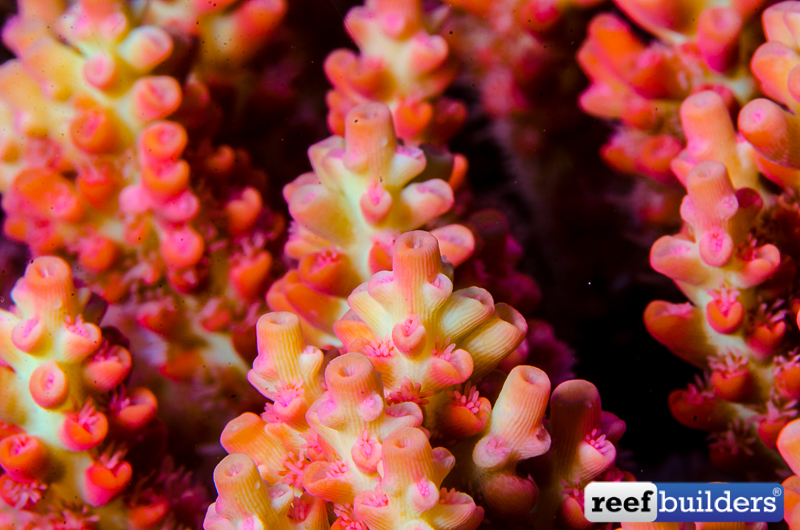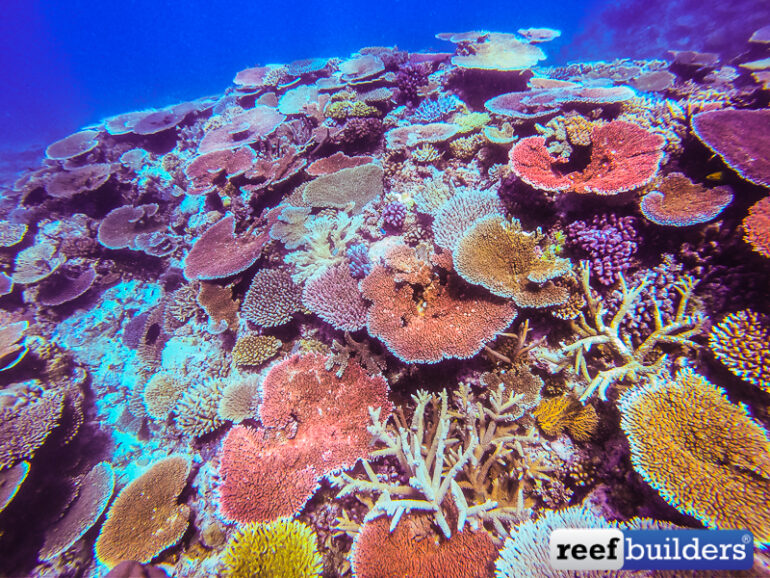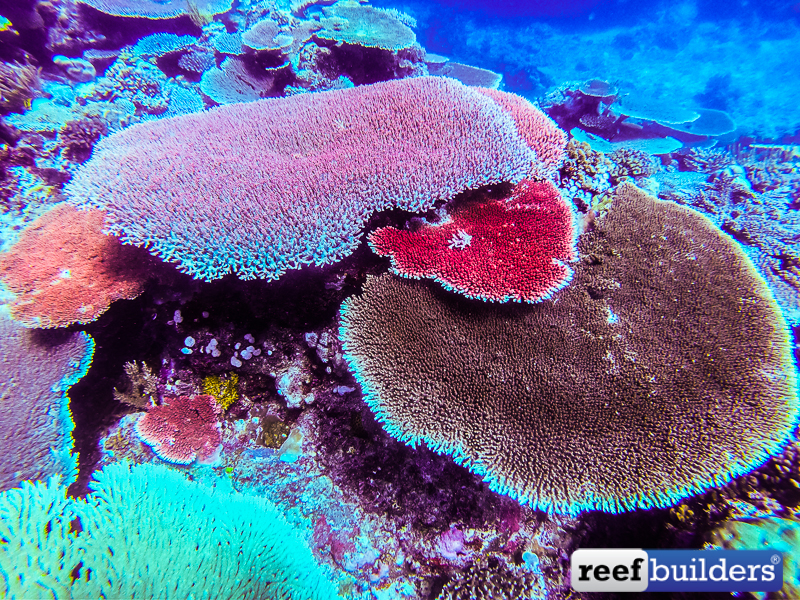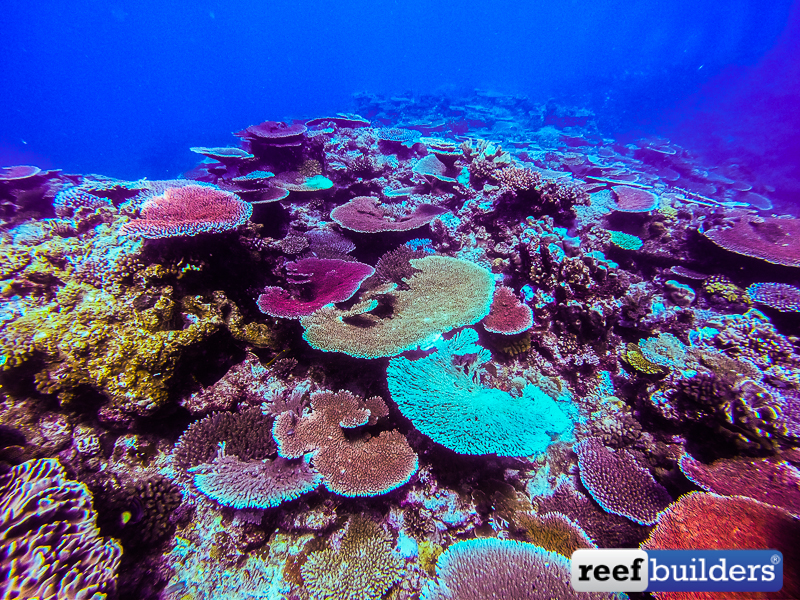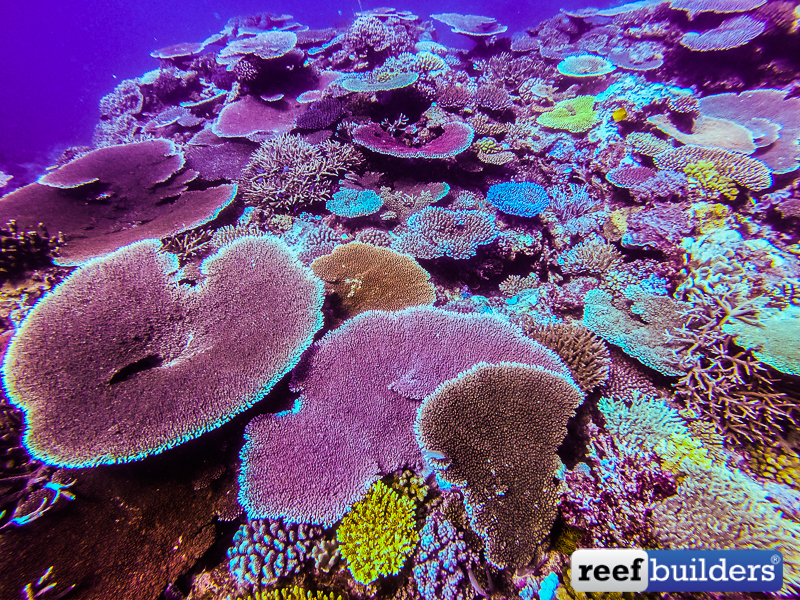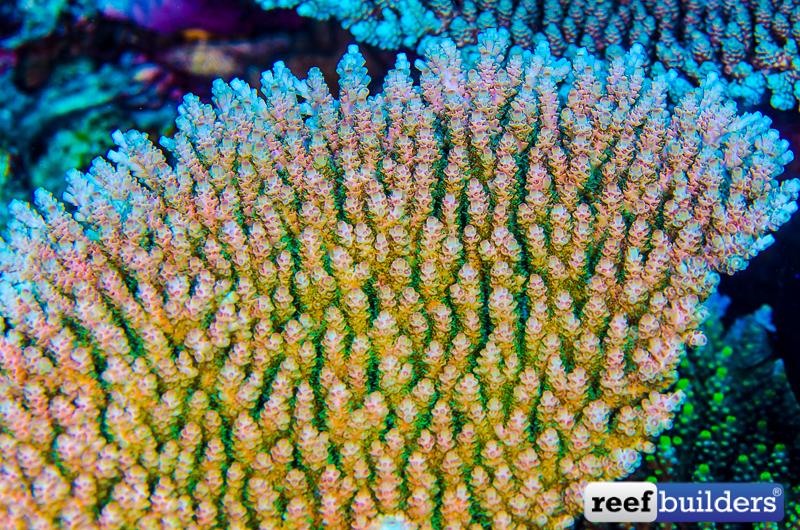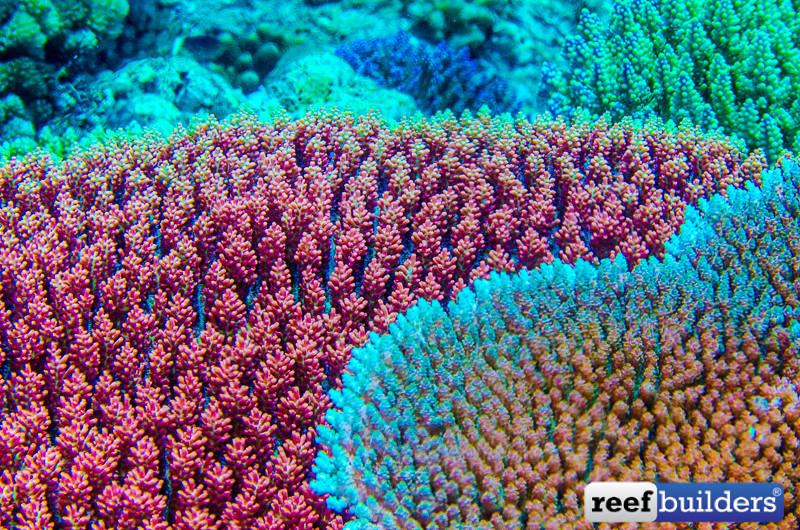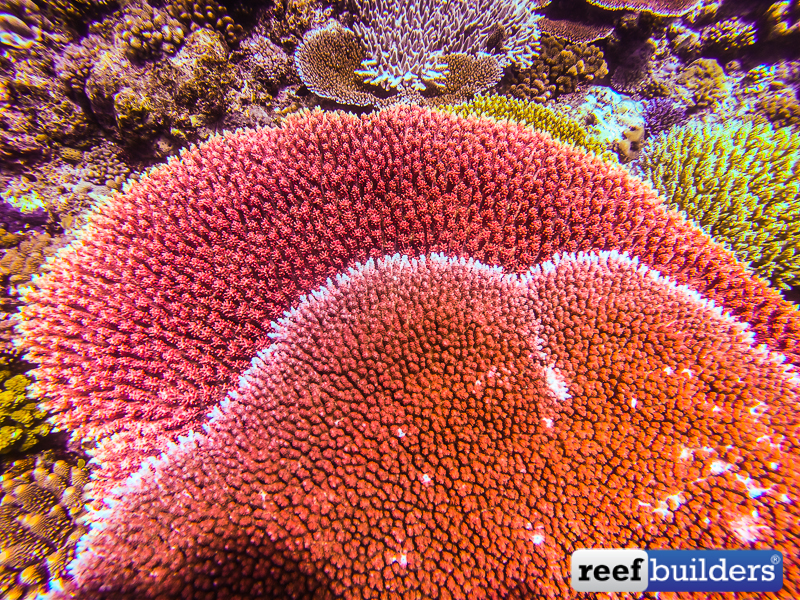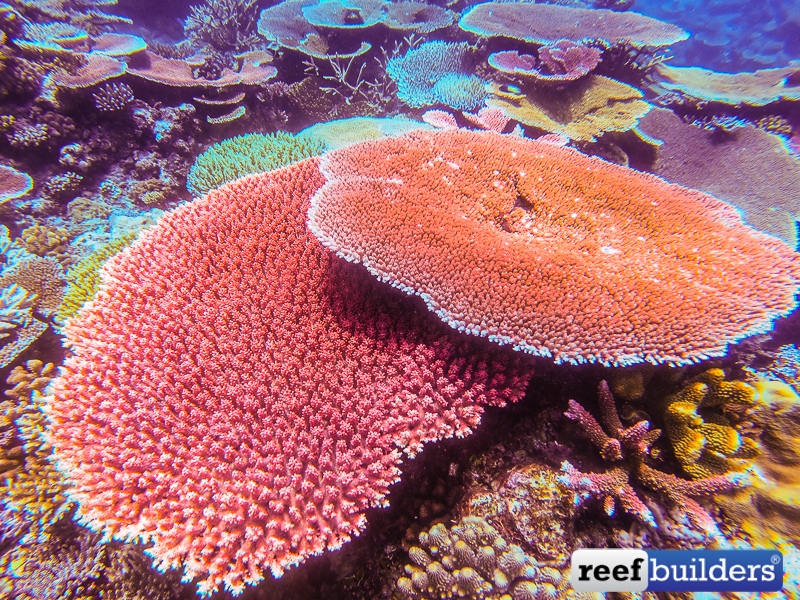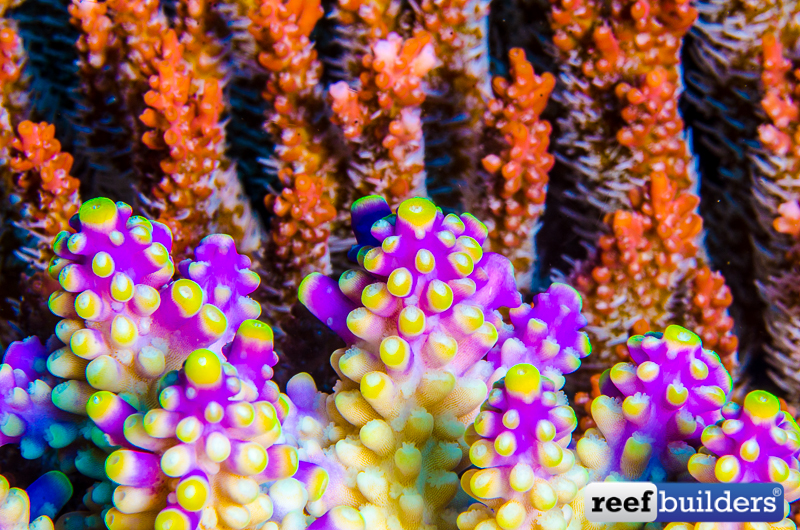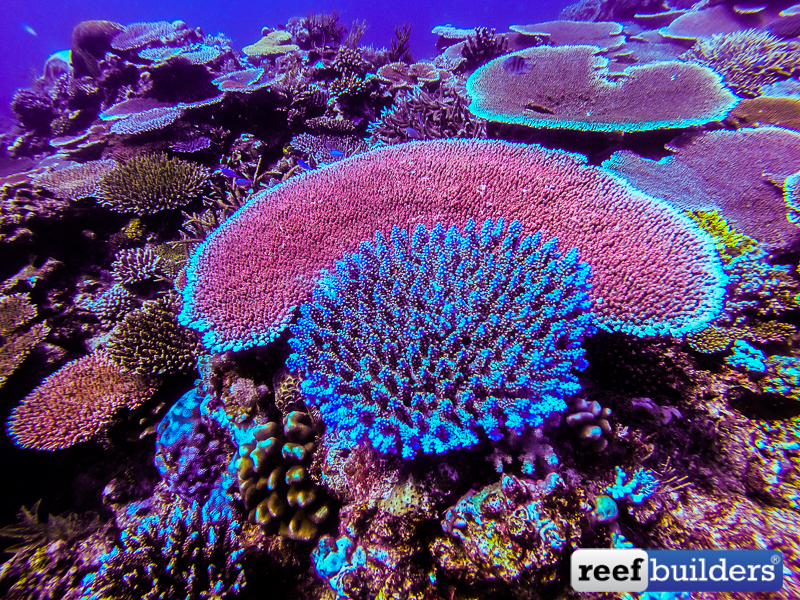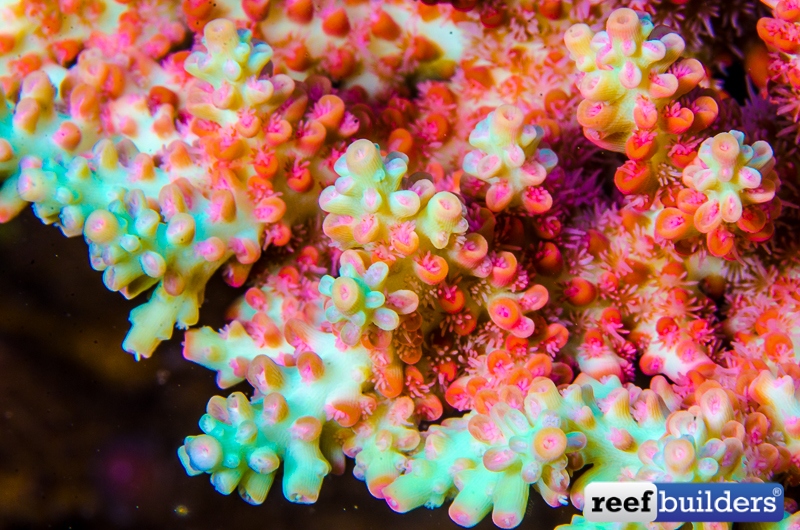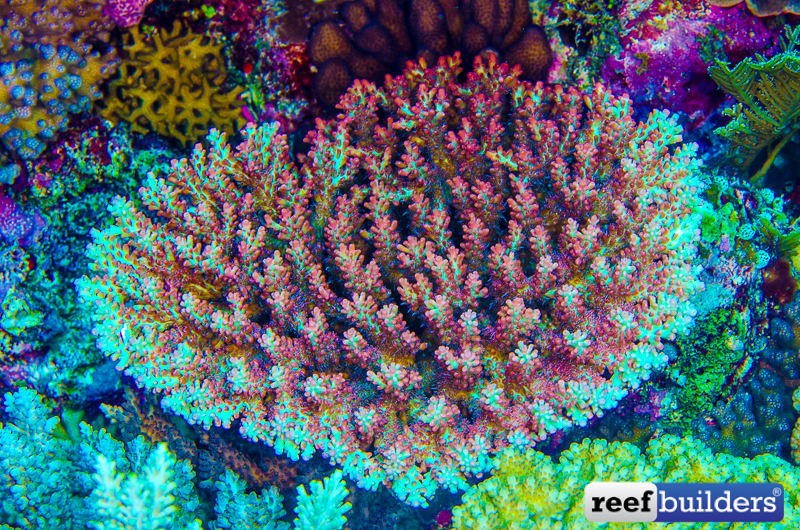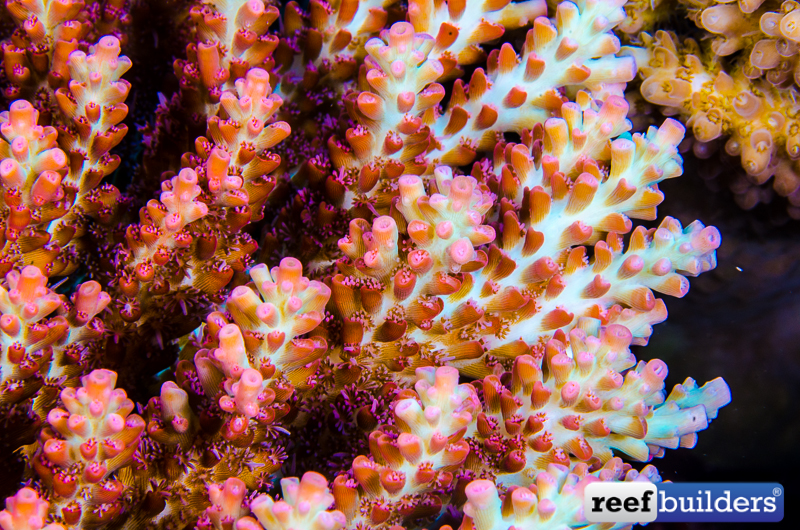Having learnt my Acros while living in Indonesia, I’ve grown up as an inshore reef stony coral freak because offshore reefs conditions are almost impossible to find in Indonesia. Even though we can find some of the species there, they are almost never seen with such intense coloration.
The most colorful Acros are only located in a special section of the reef:
It’s only when after diving there, and having long talks with Nic from Ultra Coral Australia, that I start to understand what kind of challenge these Acros bring to the hobbyist. And one thing is sure, they are not for the beginner SPS Reef Builder.
Even though you can find Acropora microclados, A. hyacinthus, A. solitaryensis or A. spathulata, in many different location, inshore, offshore, even sometimes on the coast, you can’t find them as colorful as they are on at distant offshore reefs. And even on this offshore line, they are not the same everywhere; There are very small pockets, of crazy colorful Acros. On the same reef, there is only a small portion of it, that actually house these crazy colorful, highly sought after pieces.
Huge swell and clear oceanic water:
This section of the reef, is the section exposed to southern high swell. The section that can be pounded by huge 15 feet swells.
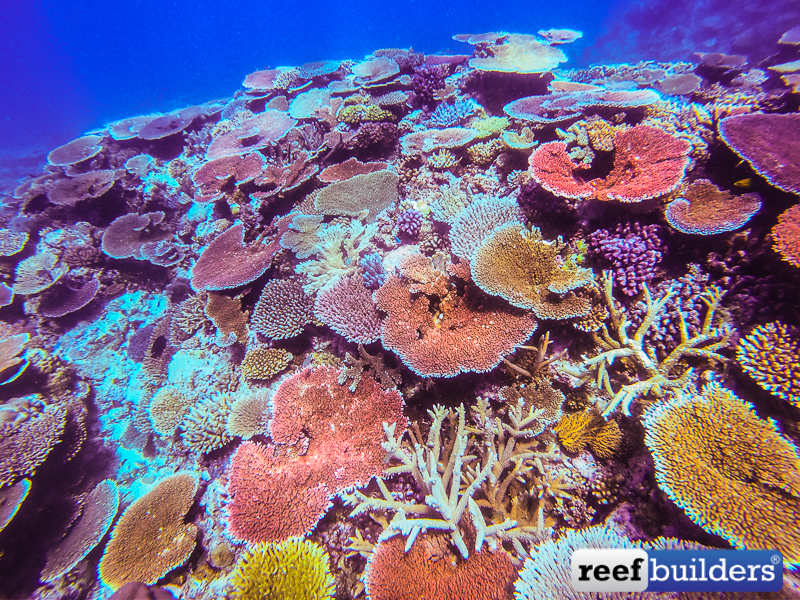
At the same time, this part of the reef bathes in clean offshore oceanic water, clear as vodka. And as Nic says, he noticed that actually growth is slower in these particular location, but competition is fierce for a piece of prime location real estate, with right exposure, and perfect quality water.
The tidal factor:
But that’s not all, and there is another important factor to take into consideration for the condition of these corals. When the tide goes out, it’s sucking out all the hight nutrients of inshore reef water. This soup of coral food, passes through the reef, from the richer inshore environments to the offshore reefs.
If the inshore side of the reef, sees most of this food pass through on a highway next to them, the offshore side of the reef, gets the turbulences created by the reef itself inside this water flow. This creates whirlpools, down current on the offshore side of the reef. The corals at this location gets a proper feeding, every 12 hours, right in their mouth. this is also where all the coral larvae will settle.
The table shape is probably the best shape to filter out this down current of food along the slope.
Conclusion:
These corals gets 6 hours of perfect quality clear oceanic water, then 6 hours of settling down, high nutriments water. And during that time, they always get aerated, high oxygen water.
Proper water analysis of these area, depending on tides and swell and scrutiny of the organics & carbon in the water would probably help us in understanding the real needs of these beautiful corals.
